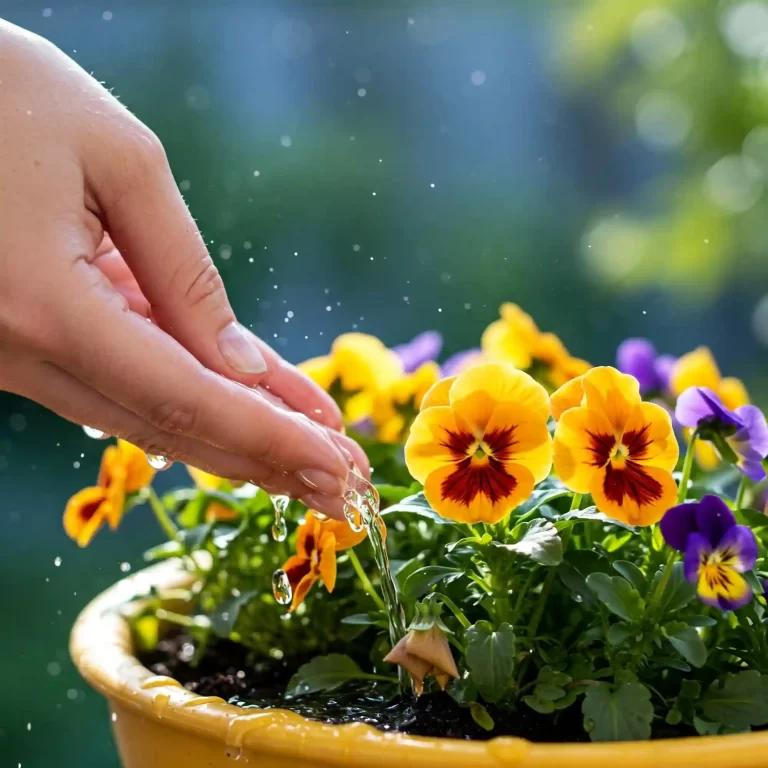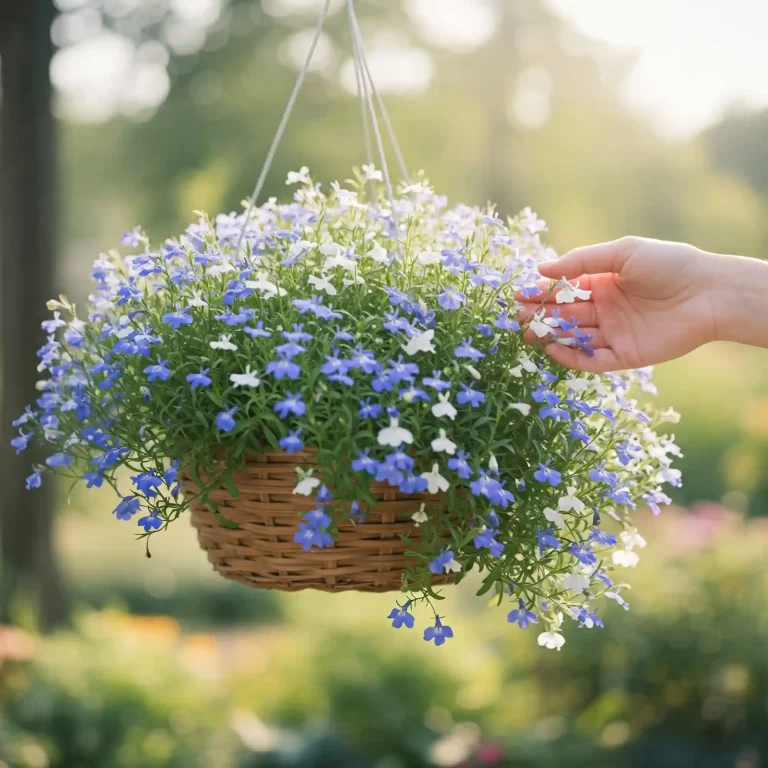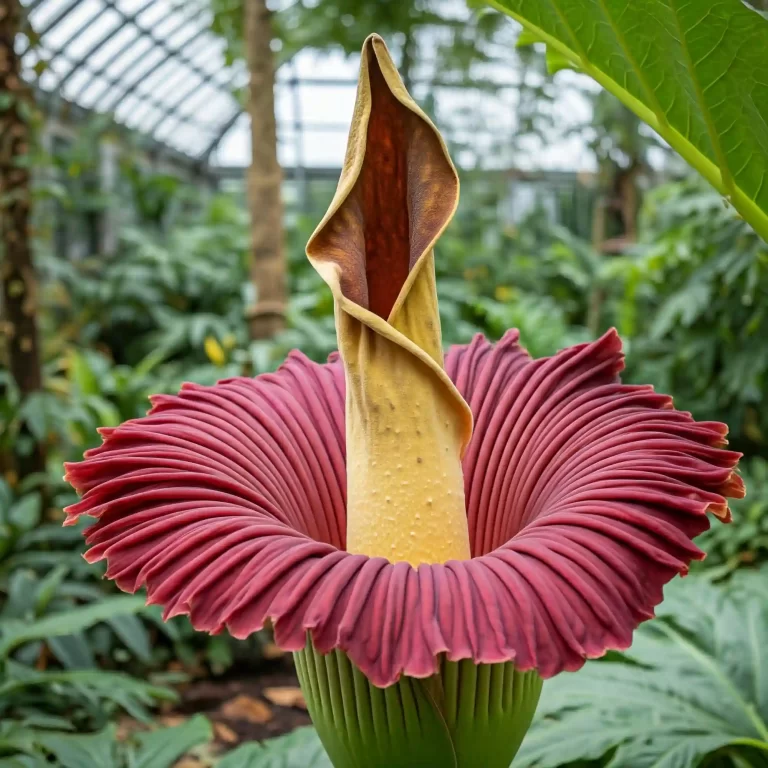Are you looking out at your garden, longing for the vibrant burst of tulips, but missed the fall planting window? It’s a common frustration, I understand. You’ve seen those stunning spring tulip displays in magazines and online, and now you’re wondering if it’s too late to get
Do you love the vibrant colors and elegant shapes of tulips but always thought you missed the boat for planting them in the fall? You might be surprised to learn that you can indeed enjoy a stunning spring tulip display with a little know-how. While fall is traditionally the optimal time for planting tulip bulbs, with careful planning and a few extra considerations, you can achieve successful spring planting. This guide will equip you with the knowledge and strategies to overcome the challenges of spring planting and cultivate a breathtaking spring garden filled with these beloved blooms.
1. Choose the Right Tulip Varieties for Spring Planting
Selecting the right tulip varieties is crucial for spring planting success. Not all tulips are created equal when it comes to late planting. Some varieties are more forgiving of the less-than-ideal conditions associated with spring planting. Here’s what to look for:
- Early-blooming varieties: These are your best bet for spring planting. They tend to be more adaptable to warmer soil temperatures and shorter growing seasons.
- Darwin Hybrids: Known for their large, vibrant flowers and sturdy stems, these are excellent choices for spring planting. Popular varieties include ‘Apeldoorn,’ ‘Red Impression,’ and ‘Will Scarlet.’ These tulips boast a wide range of colors, from classic red and yellow to vibrant purple and pink. Their sturdy stems can withstand strong winds and heavy rain, making them ideal for unpredictable spring weather.
- Triumph Tulips: These offer a wide range of colors and bloom mid-season, making them a good option for spring planting in many regions. Look for varieties like ‘Prinses Irene,’ ‘Negrita,’ and ‘Golden Apeldoorn.’ Triumph tulips are known for their elegant, goblet-shaped flowers and their ability to thrive in a variety of soil conditions.
- Fosteriana Tulips: These early-blooming tulips have large, star-shaped flowers and are well-suited for spring planting. Popular varieties include ‘Orange Emperor’ and ‘Red Riding Hood.’ Fosteriana tulips are known for their bold colors and their ability to withstand colder temperatures, making them a good choice for regions with unpredictable spring weather.
- Darwin Hybrids: Known for their large, vibrant flowers and sturdy stems, these are excellent choices for spring planting. Popular varieties include ‘Apeldoorn,’ ‘Red Impression,’ and ‘Will Scarlet.’ These tulips boast a wide range of colors, from classic red and yellow to vibrant purple and pink. Their sturdy stems can withstand strong winds and heavy rain, making them ideal for unpredictable spring weather.
- Avoid late-blooming varieties: Late-blooming varieties like Parrot Tulips and Double Early Tulips may not have enough time to develop properly if planted in spring. These varieties typically require a longer cooling period in the fall to initiate proper root development. Planting them in spring may result in poor flowering or even failure to bloom at all.
When choosing tulip bulbs, look for firm, healthy bulbs that are free of any signs of mold or rot. Avoid bulbs that feel soft or mushy, as these may not be viable. Inspect the bulbs carefully for any signs of damage or disease before planting.
By selecting the right tulip varieties, you can increase your chances of success with spring planting and enjoy a vibrant display of these beautiful blooms in your garden.
2. Prepare the Soil Properly for Spring Tulips
Tulips thrive in well-drained, fertile soil. Preparing the soil properly is essential for successful spring planting. Here are some key considerations:
- Improve soil drainage: If your soil is heavy clay, it can retain too much water, which can lead to root rot. To improve drainage, incorporate organic matter such as compost, well-rotted manure, or peat moss into the soil. These materials will help to loosen the soil and increase air circulation.
- Enrich the soil: Tulips are heavy feeders and require nutrient-rich soil to produce strong, healthy blooms. Incorporate a generous amount of organic matter into the soil before planting. This will not only improve drainage but also provide essential nutrients for the tulips. You can use compost, well-rotted manure, or a balanced organic fertilizer.
- Test soil pH: Tulips prefer slightly acidic soil with a pH between 6.0 and 7.0. You can purchase a soil pH test kit from your local garden center to determine the pH of your soil. If your soil is too alkaline, you can lower the pH by adding sulfur or peat moss.
By taking the time to prepare the soil properly, you’ll create an ideal environment for your spring-planted tulips to thrive and produce a stunning display of vibrant blooms.
3. Timing is Key: When to Plant Tulips in Late Spring
Timing is critical for successful spring tulip planting. You need to strike a balance between planting early enough to allow for sufficient root development and late enough to avoid exposing the bulbs to harsh winter conditions. Here are some general guidelines:
- Consider your region: Planting times will vary depending on your climate and the average last frost date in your area. In warmer climates, you can plant earlier than in colder regions.
- Monitor soil temperature: Aim to plant tulips when the soil temperature has consistently warmed to around 50°F (10°C). You can use a soil thermometer to check the temperature. Avoid planting when the soil is still cold, as this can hinder root development and weaken the plants.
- Plant after the last frost: Avoid planting tulips too early, as they may be damaged by late frosts. Wait until all danger of frost has passed in your area. Planting too early can expose the tender shoots to frost damage, which can weaken or even kill the plants.
- Flexibility is key: Spring weather can be unpredictable. Be prepared to adjust your planting schedule based on the weather conditions. If you experience a late cold snap, it’s best to delay planting until the weather warms up again.
By carefully monitoring soil temperatures and weather patterns, you can determine the optimal planting time for tulips in your specific location. Remember, it’s better to err on the side of caution and wait a few extra days than to risk planting too early and losing your bulbs.
By following these guidelines, you can increase your chances of success with spring tulip planting and enjoy a beautiful display of blooms in your garden.
4. How to Plant Tulip Bulbs Correctly in Spring
Proper planting technique is crucial for successful spring tulip cultivation. Here’s a step-by-step guide:
- Prepare the planting holes: Dig holes that are two to three times the depth of the tulip bulb. For example, if the bulb is two inches tall, the hole should be six to eight inches deep. This depth ensures that the bulbs are planted deep enough to withstand the cold and encourage strong root development.
- Orient the bulbs correctly: Plant the bulbs with the pointed end facing upwards. The pointed end is the growing tip, and planting it upwards will ensure that the tulip emerges from the soil correctly.
- Add bone meal: Place a small amount of bone meal in the bottom of each hole. Bone meal provides a slow-release source of phosphorus, which is essential for strong root development and healthy blooms.
- Plant the bulbs: Gently place the bulbs in the holes and cover them with soil. Firm the soil gently around the bulbs to ensure good contact.
- Water thoroughly: Water the planting area gently but thoroughly after planting. This will help to settle the soil around the bulbs and ensure that they have adequate moisture to begin root development.
By following these steps, you can ensure that your spring-planted tulips have the best possible chance of success. Remember to plant them at the correct depth and spacing, and to provide them with the necessary care to ensure healthy growth and abundant blooms.
Additional Tips:
- When planting multiple bulbs, space them approximately 4-6 inches apart to allow for adequate air circulation and prevent overcrowding.
- If you are planting tulips in containers, use a well-draining potting mix and ensure that the containers have adequate drainage holes.
- Consider planting tulips in groups or clusters for a more visually appealing display.
By following these tips and techniques, you can successfully plant tulips in spring and enjoy a beautiful display of vibrant blooms in your garden.
5. Essential Care for Spring-Planted Tulips
Providing proper care for your spring-planted tulips is essential for healthy growth and abundant blooms. Here are some key considerations:
- Watering: Water your tulips regularly, especially during dry periods. Avoid overwatering, as this can lead to root rot. Water deeply and thoroughly, ensuring that the soil is evenly moistened but not waterlogged.
- Mulching: Apply a layer of mulch around the base of the plants to help retain moisture, suppress weeds, and regulate soil temperature. Use a light layer of organic mulch, such as wood chips or shredded bark. Avoid using heavy mulch, as this can hinder air circulation and promote fungal diseases.
- Fertilizing: Fertilize your tulips with a balanced liquid fertilizer once they begin to sprout. You can also use a slow-release fertilizer at planting time. Avoid using high-nitrogen fertilizers, as these can promote excessive leaf growth at the expense of flower production.
- Pest and disease control: Monitor your tulips regularly for pests and diseases. Common pests include aphids, slugs, and squirrels. Aphids can be controlled by spraying the plants with a strong jet of water or using insecticidal soap. Slugs can be deterred by placing copper barriers around the base of the plants. Squirrels can be discouraged by using repellents or by covering the plants with netting. Common diseases that can affect tulips include gray mold and tulip fire. These diseases can be prevented by practicing good sanitation and avoiding overhead watering.
By providing consistent care, you can help your spring-planted tulips thrive and produce a stunning display of vibrant blooms. Remember to water regularly, mulch to retain moisture, fertilize appropriately, and monitor for pests and diseases. With proper care, you can enjoy the beauty of your spring-planted tulips for weeks to come.
6. How to Extend the Bloom Time of Your Spring Tulips
One of the joys of spring gardening is the vibrant display of colorful tulips. However, the bloom time of tulips can be relatively short. Fortunately, there are several techniques you can employ to extend the blooming period of your spring-planted tulips and enjoy their beauty for a longer time.
- Deadheading: Regularly remove spent flowers as soon as they begin to fade. This process, known as deadheading, prevents the plant from expending energy on seed production and encourages it to continue producing new blooms.
- Support tall varieties: Some tulip varieties, particularly the taller ones, may require staking for support. Strong winds or heavy rain can cause the tall stems to bend or break. Use stakes and garden ties to provide support and prevent the plants from flopping over.
- Plant a succession of varieties: By planting a mix of early-, mid-, and late-blooming tulip varieties, you can create a continuous succession of blooms throughout the spring season. This will ensure that you have a constant display of color in your garden.
- Prepare the bulbs for next year: After the tulips have finished blooming, allow the foliage to die back naturally. Do not cut back the leaves prematurely, as they are essential for the plant to replenish its energy reserves for the following year. Once the foliage has turned yellow and withered, you can gently remove it from the garden.
By implementing these techniques, you can extend the bloom time of your spring-planted tulips and enjoy their beauty for weeks to come. Remember, proper care and attention to detail will reward you with a vibrant and long-lasting tulip display in your spring garden.
7. Troubleshooting Common Issues with Spring Tulip Planting
Even with the best planning and care, you may encounter some challenges when planting tulips in spring. Here are some common issues and how to address them:
- Bulbs not sprouting: If your tulip bulbs fail to sprout, there could be several reasons. The bulbs may not have been viable, the soil may be too cold or too wet, or the bulbs may have been planted too deeply. If you encounter this problem, you can try replanting the bulbs in the fall for better results.
- Weak stems: Weak stems can be caused by a variety of factors, including insufficient sunlight, poor soil drainage, or nutrient deficiencies. Ensure that your tulips are planted in a location that receives at least six hours of sunlight per day. Amend the soil with compost or other organic matter to improve drainage and fertility.
- Pest damage: Pests such as squirrels, rabbits, and voles can damage tulip bulbs and seedlings. Protect your tulips by using protective netting or repellents. You can also plant tulips in containers to deter pests.
- Disease: Tulip bulbs can be affected by diseases such as gray mold and tulip fire. These diseases can cause the leaves and flowers to become discolored and distorted. Practice good sanitation to prevent the spread of disease. Remove and destroy any infected plants.
- Unexpected late frosts: Late frosts can damage or kill newly emerged tulip shoots. If a late frost is predicted, cover your tulips with frost cloth or row covers to protect them.
By being aware of these potential problems and taking steps to address them, you can increase your chances of success with spring tulip planting and enjoy a beautiful display of blooms in your garden. Remember, patience and careful observation are key to overcoming any challenges you may encounter.
I hope this comprehensive guide has equipped you with the knowledge and confidence to successfully plant tulips in spring. By following these tips and techniques, you can enjoy a vibrant and rewarding spring garden filled with these beloved blooms. Happy gardening!
FAQ:
What is the best soil for planting tulips in spring?
Well-drained, fertile soil is ideal for spring tulip planting. Amend heavy clay soil with compost or other organic matter to improve drainage and aeration.
How late in spring can I plant tulip bulbs successfully?
Planting tulips in late spring can be successful if you choose early-blooming varieties and the soil temperature is suitable. Aim to plant when the soil temperature has consistently warmed to around 50°F (10°C) and after the last frost.
Can I plant tulips in pots during the spring months?
Yes, tulips can be planted in pots during spring months. Use a well-draining potting mix and ensure that the containers have adequate drainage holes. Choose smaller varieties of tulips for container planting.
What are the steps for planting tulips in spring after winter?
- Prepare the soil by amending it with compost and testing the pH.
- Select healthy tulip bulbs of early-blooming varieties.
- Dig holes two to three times the depth of the bulb.
- Place a small amount of bone meal in each hole.
- Plant the bulbs with the pointed end up.
- Cover the bulbs with soil and water thoroughly.
How do I care for tulips planted in spring to ensure blooming?
- Water regularly, especially during dry periods.
- Apply a layer of mulch to retain moisture and suppress weeds.
- Fertilize with a balanced liquid fertilizer once the plants begin to sprout.
- Monitor for pests and diseases, and take appropriate action.
What type of fertilizer should I use when planting tulips in spring?
Use a balanced fertilizer or bone meal when planting. Avoid using high-nitrogen fertilizers, as these can promote excessive leaf growth at the expense of flower production.
Where can I find tulip bulbs for spring planting in my region?
Check local garden centers, nurseries, and online retailers for tulip bulbs suitable for spring planting. You can also contact your local gardening club or extension office for recommendations.
How deep should I plant different varieties of tulips in spring?
Generally, plant tulip bulbs 4-6 inches deep. However, check the specific variety instructions for optimal planting depth. Some varieties may require deeper planting than others.
What is the ideal weather for planting tulip bulbs in late spring?
The ideal weather for planting tulip bulbs in late spring is when the soil temperature has consistently warmed to around 50°F (10°C) and the risk of frost has passed.
How to protect newly planted tulips from frost in early spring?
If a late frost is predicted, cover your newly planted tulips with frost cloth or row covers to protect them from damage.
Conclusion:
Planting tulips in spring can be a rewarding experience, allowing you to enjoy the vibrant beauty of these iconic flowers even if you missed the traditional fall planting window. By carefully selecting the right varieties, preparing the soil properly, and providing the necessary care, you can increase your chances of success and create a stunning spring garden.
Remember, patience and observation are key. Pay attention to your tulips’ needs, address any challenges that arise, and enjoy the process of nurturing these beautiful blooms. With a little effort and the right approach, you can achieve a vibrant and rewarding spring tulip display, even with a late start.
Happy gardening!




